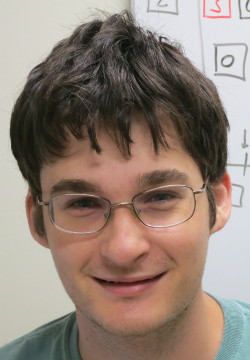Introduction and Research

About Me
I am a Post-Doctoral Fellow in the department of physics at Emory University. Currently, I am conducting research with Ilya Nemenman. At Emory I am studying how and how fast an organism can reach an optimal growth rate in a fluctuating environment, using either one of two strategies: individual adaptation (Lamarckian) or population level adaptation through selection (Darwinian). I am also working in a collaboration with Nic Vega examining bacterial communities in C. elegans.
Previously, in my doctoral work, I worked with Nigel Goldenfeld, studying phenomena as diverse as stochastic Turing patterns, image analysis of roots, transposon and retro-element dynamics, and colony growth of E-coli. At University of Illinois Urbana-Champaign I acted as a teaching assistant for physics 101, 102, 211, and 435 and was ranked as an excellent teacher all 8 semesters I taught. In the fall of 2012, I was a mentor TA for physics 101 and in this capacity helped advise other graduate students on how to best teach based on my previous experience. In the past two years, I have also been mentoring two undergraduates to successful completion of research projects in Nigel Goldenfeld's group.
My Research Interests
My research uses computational and analytic techniques from statistical physics to examine spatial patterns and dynamics in complex biological systems.
In collaboration with experimentalists at MIT and UIUC I have shown how noise can stabilize emergent behaviors such as Turing patterns in biofilms. Normally one would think that noise destroys patterns but we found that fluctuations in the copy number of signaling molecules acting as activator and inhibitors of gene expression leads to pattern formation. Surprisingly we can show theoretically that these fluctuations increase the range of experimental conditions in which patterns can form.
In collaboration with experimentalists at UIUC, we have observed how evolution acts on variation in time, space, and genome locus by imaging live cells with fluorescent reporters that allow us to track transposons dynamics. Transposons, also known as jumping genes, are found in all organisms and have activity that can cause mutations and drive evolution. As part of this collaboration I developed the software for image analysis of the cells and analyzed the resulting statistics of events. We discovered that the excision rate of transposons depends on orientation of the element, spatial location of the cell, and some heritable factors.
In a follow-up experiment, I recently developed a model to explain our collaborators' observation that the number of retrotransposon transcripts, transcripts produced by a copy and paste type of mobile genetic element, produces an exponential growth dependence defect. I developed a model for the copy number dynamics of retro-elements and the time it takes these elements to be lost from a population of cells depending on the observed growth rate defect, transposition rate, and inactivation rate. This model explains why Group II introns are present in about 30% of bacterial species, while retrotransposons are essentially absent. This research sheds light on the early evolution of the eukaryotic spliceosome, the cellular machinery allowing complex organisms to remove intra-gene junk DNA during gene expression.
For more details see: Research (pdf) and Curriculum Vitae (pdf)